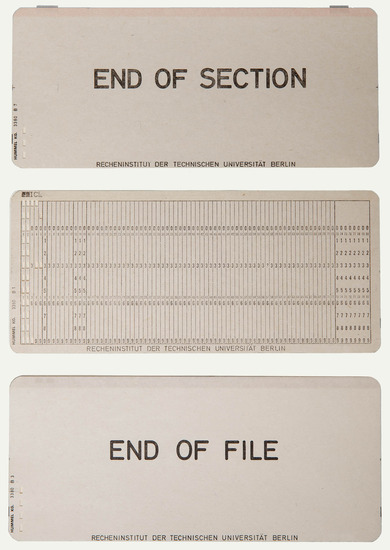Writing beyond script
The device functions perfectly like the work of God, but is easily superior when it comes to speed.
Electric Engineer, 1891, talking about the punch card machine from Herman Hollerith used in the census in the United States of America
In the age of technical media, which require more than just paper and a pencil, many recording procedures have nothing to do with traditional methods. Procedures for recording sound, data and images, for example, have given rise to a number of different information carriers. While a developed photograph can also be enjoyed with the naked eye, most technical recording procedures require additional playback devices, otherwise the recordings are of no use. This is the reason why many recordings are no longer accessible for us.
Examples are the punch card and the piano roll: the punch card technology, originally invented by Herman Hollerith (1860-1929) came to have a standard form in a punch card format with twelve rows and eighty columns so that up to eighty characters could be recorded with the square holes. For several decades they were an often used, machine-readable data carrier. Recorded piano rolls were created by recording the original playing of a pianist on a special recording piano and then reworking this.

